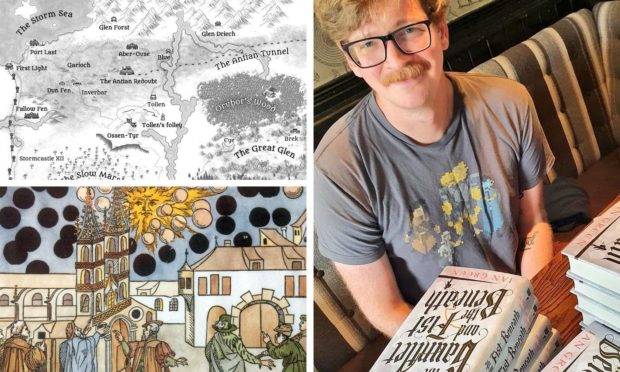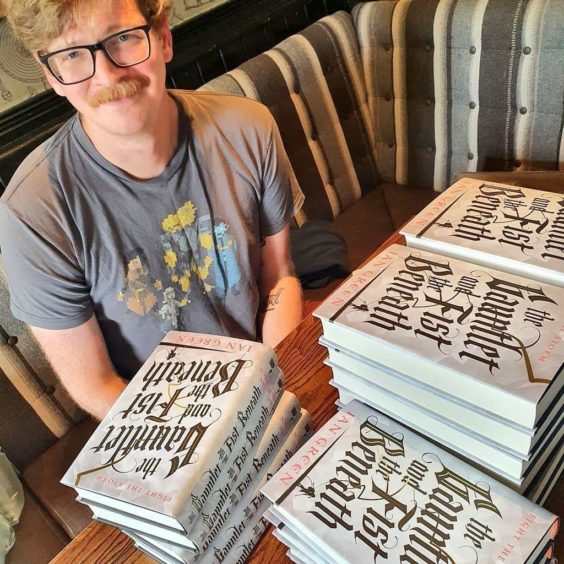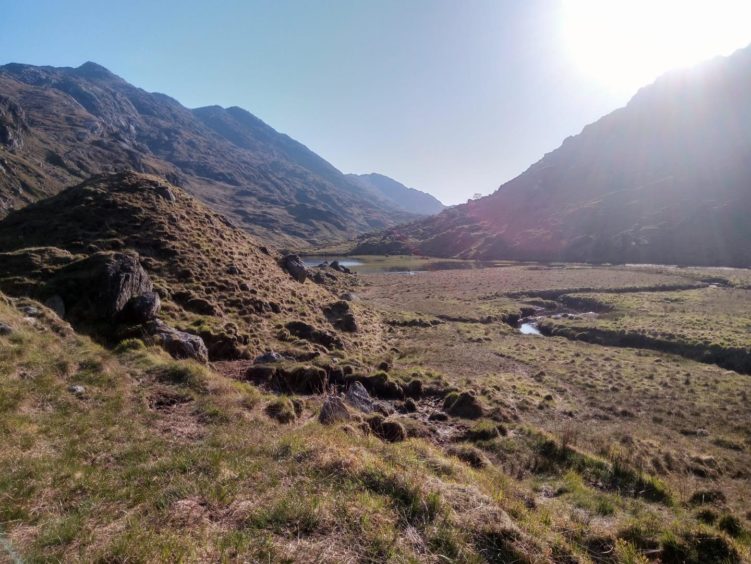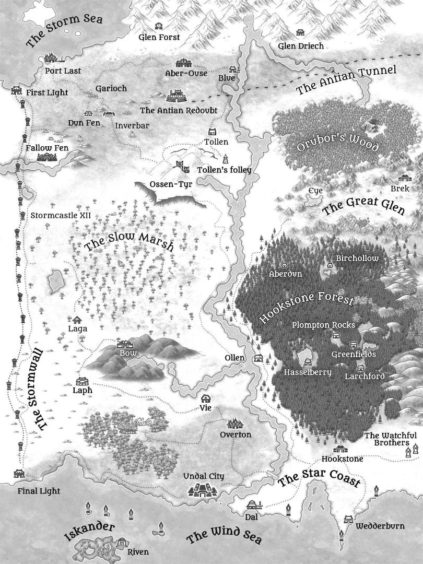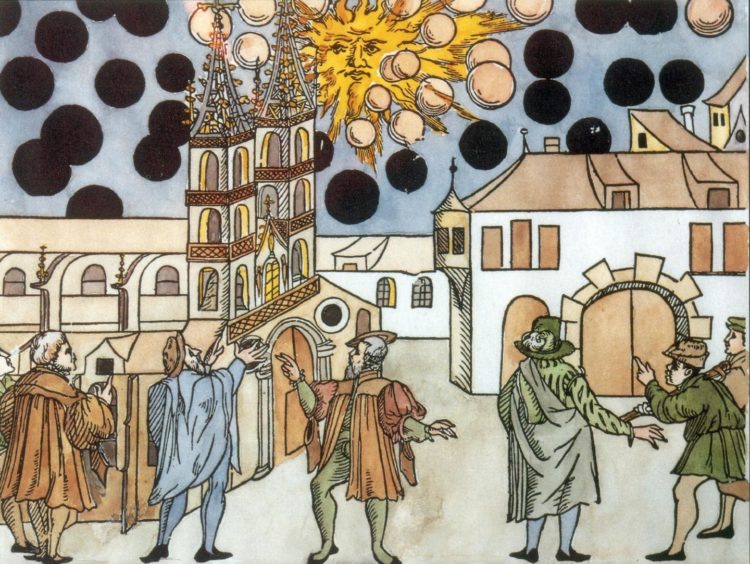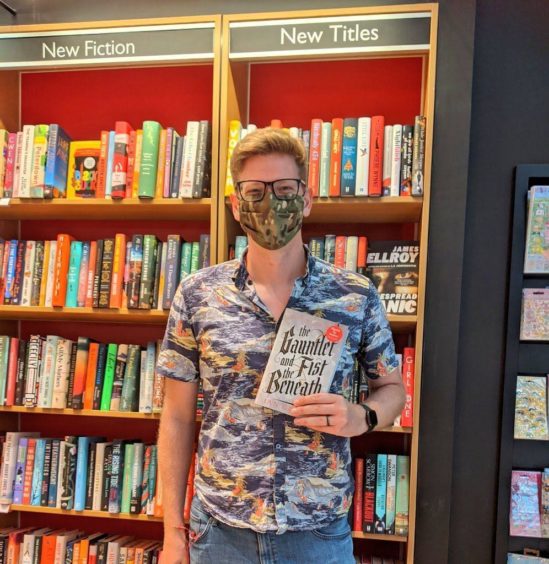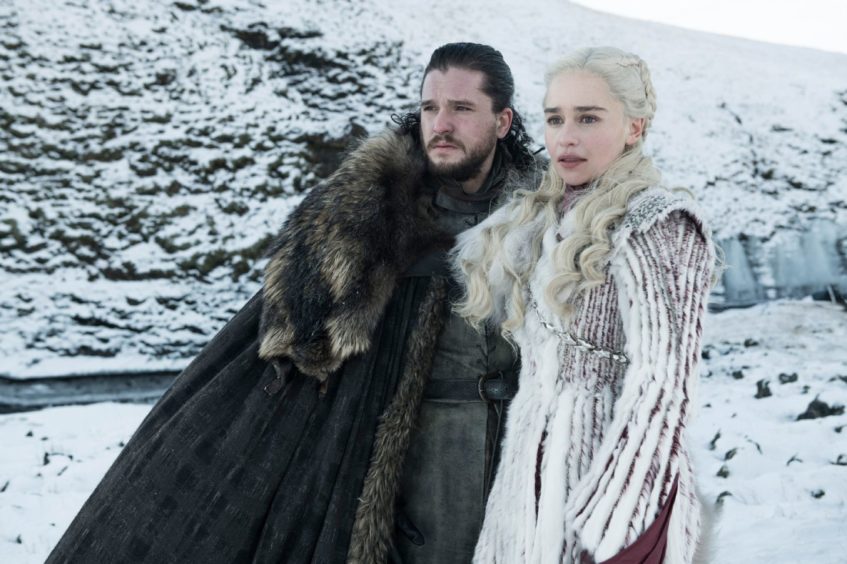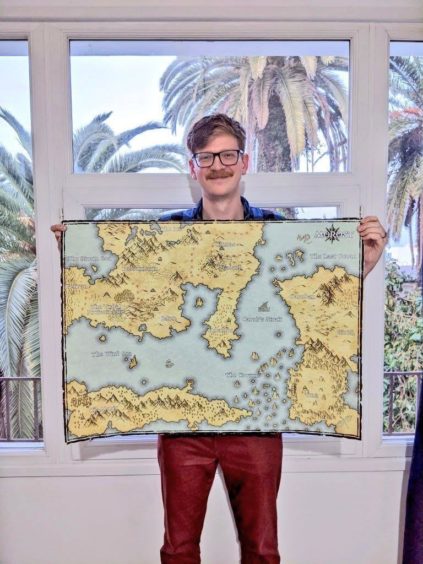The fallen Ferron Empire is a fearsome medieval place of twisted monsters and ancient gods that has deep roots in … the north-east of Scotland.
When debut author Ian Green was world-building for his fantasy novel The Gauntlet And The Fist Beneath, he turned to what he knows best, the place where he grew up.
Not that Potterton faces an endless rotstorm to bring it to ruin – but it does have that Scottish landscape, weather and language that Ian tapped into in order to make his world believable.
“I’ve taken a lot of the naming conventions of the north-east because there’s such a beautiful poetic language around that, so like Chapel of Garioch for example, to build up a world that felt deep and felt thorough,” said Ian, whose novel – the first in a trilogy – was published last week.
Marching up and down Balmedie Beach
Ian also drew on his love of Scotland’s landscape and countryside – and weather – to make his creation ring true.
“What I ended up focusing on to try to draw people in was the physicality and nature of it. So I took a lot of that from Scotland. I love hiking, there’s nothing I like more than wandering around in the rain in Scotland or marching up and down Balmedie Beach, soaking wet,” he said.
“So the idea was taking that rugged physicality you get in the north-east and across Scotland and using that as my root point in the world.
“I want the physicality of it to be so believable, the nature you are surrounded by to be so believable, you allow yourself to accept the more fantastical elements.”
Ian said the setting of his novel is inspired by Scotland but is not trying to be Scotland. That said, there are speech patterns, notes and asides that Scottish – and particularly north-east – readers will recognise.
He’s even worked in some little jokes.
“In the map in the front of the book – because every good fantasy book has a map in it – there’s a little town at the very top that no one in the book ever mentions or goes to called Glen Driech.”
Ian Green was inspired by tales of medieval UFO sightings
Setting aside, The Gauntlet And The Fist beneath is an epic action fantasy, built around the character of Flore, a woman retired from a life of brutal violence in the military. She is forced to return to a life of brutality after her daughter is kidnapped when blazing orbs of light descend on her village.
It was inspired by true-life accounts of mass sightings of strange lights in the sky in Nuremberg in 1561, which Ian – an epigeneticist turned writer – came across while working on a short story about UFOs. He was drawn to a woodcut, reproduced in a German newspaper, which portrayed the celestial lights.
“So these medieval peasants were looking up at all these crazy lights in the sky. That ticked something in my brain. So there are elements of sci-fi in this, there are elements of UFO phenomena. What do you do when there is something technologically beyond you?” said Ian.
“So I ended up with this story of a mother whose daughter has been taken by these lights. That led me down this wonderful rabbit hole. How do you get from warring nations at that level of tech, up to a sci fi utopia?”
Ian, who cites authors such as Iain M Banks, Ursula K Le Guin and China Mieville, among his influences is also aware that any mention of fantasy novels inevitably brings Game Of Thrones to mind for many people.
He’s a huge fan of George RR Martin’s sprawling and intricate works, but isn’t making any comparison between that and his own work, with the first novel published, the second already written and third being mapped out.
“A lot of Game Of Thrones is incredibly political and I’m not particularly interested in that,” said the former Bridge of Don Academy pupil who is now based in Algiers, where his wife works in the British Embassy.
“This is much more action fantasy. It’s sword fights and wolves. if you took all of the action stuff from Game Of Thrones … If you’re someone who got a little bit bored by the politics in Game Of Throne, then this might be for you.”
Challenged assumptions – and sword fights
Growing up, Ian loved epic fantasy and action novels that could take you to another world, while leaving you looking differently at the world we live in.
“The sort of books that let you ask questions about yourself as you see characters going through these different situations. I always took a lot of value from that and still do all the time. And so if I can do that for someone else, then I’d appreciate it,” he said.
“I think there’s a lot of value in just escapist fiction in its own sense. But I think there are some elements of the work that will hopefully make readers think about what kind of nation they want to be in, what kind of world they want to build and question their assumptions about who are necessarily the good guys or the bad guys.
“But there are also just lots of swords fights.”
The Gauntlet And The Fist Beneath, by Ian Green, published by Head Of Zeus, is available now.
You might also like…
- Ian Green: Scotland’s north-east is the perfect inspiration and anchor for fantasy fiction
- Award-winning authors announced for ‘exciting’ return of book and arts festival
- WATCH: Author tells new chilling tales of murders, nightmares and spooks in haunted Aberdeen
- Comic Con Scotland set to welcome thousands of fans to celebrate cult films and TV at P&J Live
